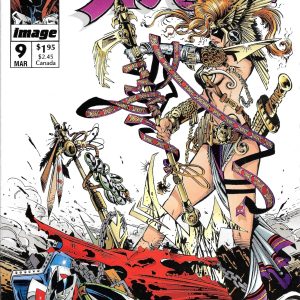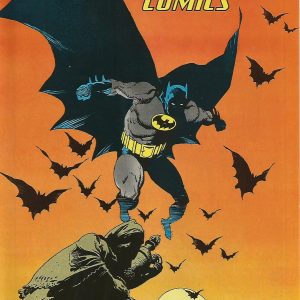Watchmen #1 (fn) – 1986 First Watchmen
Description
Welcome, fellow comic book enthusiasts, to an exploration of one of the most groundbreaking comic book series in history- Watchmen. Released in 1986, the debut issue, Watchmen #1, marked the beginning of a revolutionary story that would shape the landscape of the medium for years to come. In this blog post, we’ll dive into the significance of this first installment, its unique characters, and the impact it had on the comic book industry.
1. The Significance of Watchmen #1:
Watchmen #1, written by Alan Moore and illustrated by Dave Gibbons, introduced readers to an entirely new approach to superhero storytelling. Tackling darker themes and exploring the complex psychology behind costumed heroes, Watchmen challenged the conventional tropes of the genre. The comic book became a catalyst for change, blurring the line between heroes and villains.
2. A Unique and Engaging Cast of Characters:
At the heart of Watchmen #1 lies a diverse ensemble of characters, each with their own deep-seated flaws and moral conundrums. Readers were introduced to Rorschach, a vigilante driven by uncompromising justice, and Doctor Manhattan, a god-like being grappling with his humanity. The comic also introduced Silk Spectre, Nite Owl, Ozymandias, and The Comedian, each playing a vital role in the intricate narrative that ensued.
3. Delving into Sociopolitical Realism:
What set Watchmen #1 apart from its contemporaries was its exploration of sociopolitical issues. The story is set in an alternate 1985, where the presence of superheroes has influenced historical events and politics. Alan Moore artfully weaves a tale of an impending nuclear threat and explores characters’ responses to the deteriorating society around them. In doing so, Watchmen challenged readers to examine our own world through a different lens.
4. The Watchmen Legacy:
Watchmen #1 kickstarted a shift in the comic book industry. It shattered the notion that superheroes could only be idealistic and morally upright, paving the way for a darker, more nuanced approach to storytelling. The limited series spanned twelve issues, and its success led to a graphic novel compilation that remains a bestseller to this day. The influence of Watchmen continues to reverberate in comics, films, and television, inspiring new generations of creators.
Conclusion:
Watchmen #1 stands as a testament to the power of storytelling and the lasting impact it can have on an entire industry. Alan Moore’s impeccable writing, combined with Dave Gibbons’ exquisite artwork, catapulted Watchmen into a league of its own. From its unique characters to its exploration of sociopolitical realism, this comic book marked a turning point in the medium’s history. The legacy of Watchmen endures to this day, forever altering the landscape of comic book storytelling. So, whether you’re a seasoned reader or new to the world of comics, Watchmen #1 is an absolute must-read for anyone looking to understand the evolution of the modern superhero tale.






